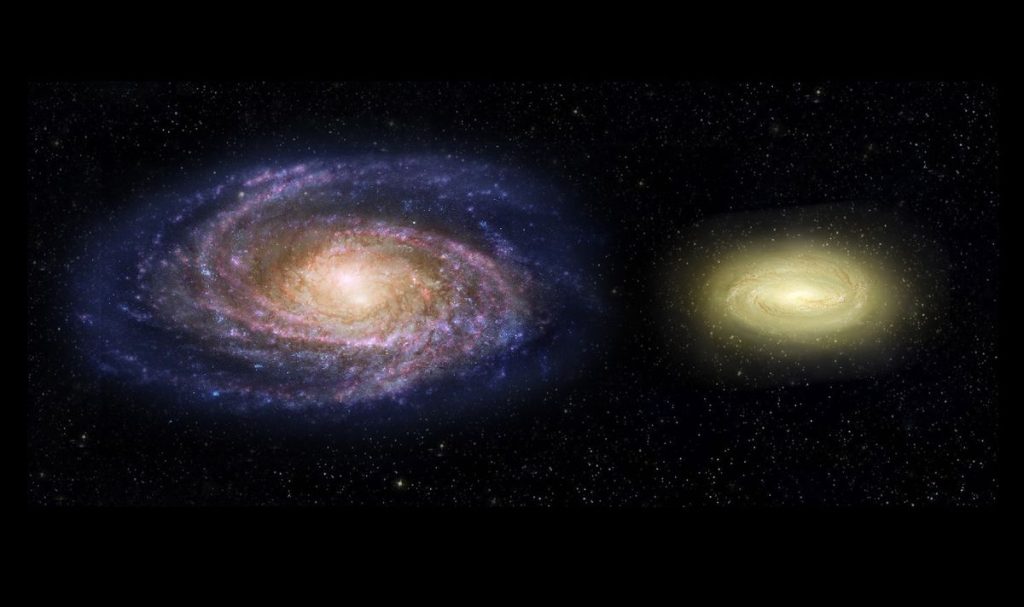Strange radio signals traced to outskirts of long-dead galaxy — and scientists aren’t sure why – Livescience.com

A dead galaxy shouldn’t produce bursts of radio light. Yet this 11 billion-year-old one did — throwing scientists for a loop.
When you purchase through links on our site, we may earn an affiliate commission. Here’s how it works.
Our universe has plenty of stellar graveyards — dead galaxies littered with the burnt corpses of once-brilliant stars. But one of these ancient galaxies appears to be crawling back out of the grave.New research has found a dead galaxy beaming mysterious flashes of light — a behavior that should be buried well into its past. The two new studies describing the shocking discovery were published Jan. 21 in The Astrophysical Journal Letters.According to the researchers, the perplexing flash is a type of cosmic eruption known as a fast radio burst (FRB) — fleeting flares of radio light that can outshine an entire galaxy for a couple of milliseconds before disappearing entirely. Some are one-off bursts, while others repeat at regular intervals. FRBs are thought to accompany supernova explosions, which announce the deaths of high-mass stars. So they’re more likely to occur where stars form — in young, lively galaxies with enough gas and dust to fuel stellar births.”Of the thousands of FRBs discovered to date, only about a hundred have been pinpointed to their host galaxies,” Tarraneh Eftekhari, a co-author of both new studies and an astronomer at Northwestern University, told Live Science. “And those galaxies tend to have a lot of star formation, which means more stars are going supernova.”But then, Eftekhari and her colleagues zeroed in on a new repeating burst, combining 22 signals detected between February and November 2024 by the Canadian Hydrogen Intensity Mapping Experiment (CHIME), a radio telescope array in British Columbia. The results trace the bursts back to an unexpected culprit: the outskirts of an 11 billion-year-old dead galaxy that should have retired from star formation long ago. But that doesn’t necessarily mean it’s sparking back to life.”This observation from a very dead galaxy tells us that there needs to be some other way for an FRB to be produced,” Eftekhari said. “This discovery goes against the nicer picture we’ve had of FRBs so far.”According to study co-author Vishwangi Shah, an astronomer at McGill University, FRBs also tend to occur near the centers of galaxies, making this burst from the galaxy’s edge even more peculiar. “All of these surprises combined make this FRB an outlier among the larger population,” Shah told Live Science.Get the world’s most fascinating discoveries delivered straight to your inbox.—Our galaxy’s monster black hole is spitting out mysterious flares, James Webb telescope reveals—1 million ‘interstellar objects’ — each larger than the Statue of Liberty — may lurk in the outer solar system—’Like a family photo of our solar system’: The James Webb telescope is watching 2 alien planets being born before our eyesThe team has some ideas of what might be behind the burst. One possibility is that two old stars may have collided. The other is that a white dwarf — the shriveled remains of a dead star — may have collapsed on itself. Either way, the new discovery leaves much to be investigated about the nature of FRBs.Within the coming months, more of CHIME’s telescope array will come online, with the goal of adding hundreds of additional bursts to the FRB inventory, Eftekhari said. “We’ll be able to zoom in on the environments of tons more of these events and trace them back to different types of galaxies,” she added.Jenna Ahart is a physics and astronomy writer who has previously written for NASA and MIT Technology Review. During her bachelor’s at George Washington University, she studied journalism and astrophysics, and she’s currently pursuing her master’s in science communication at the University of California, Santa Cruz.Please logout and then login again, you will then be prompted to enter your display name.Blood moon 2025: How to see the moon turn red over North America during March’s total lunar eclipseChance of ‘city-killer’ asteroid 2024 YR4 smashing into Earth rises yet again to 3.1%, NASA reportsNASA changes odds of asteroid hitting Earth in 2032 yet again — but this time it’s good news
Live Science is part of Future US Inc, an international media group and leading digital publisher. Visit our corporate site.
©
Future US, Inc. Full 7th Floor, 130 West 42nd Street,
New York,
NY 10036.






